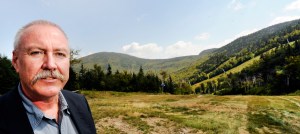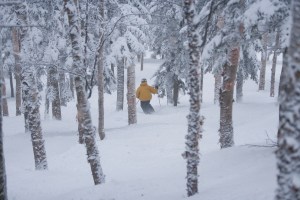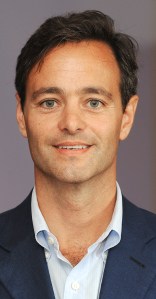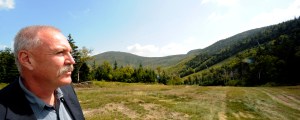CARRABASSETT VALLEY — Resort officials at Sugarloaf said Tuesday that they would begin offering glade skiing on more than 600 acres of new terrain, nearly doubling the area now available for snowboard riders and skiers.
“We are finally going to Burnt Mountain,” said Stephen Kircher, the president of Boyne East, operators of Sugarloaf.
For the most part, the plan is a cost-effective way to add terrain and variety to the resort’s offerings.
“It does it in a way that doesn’t break the bank and it really adds value to the experience,” Kircher said.
The announcement comes nearly one year after Saddleback Ski Area in nearby Dallas Plantation unveiled a 45-acre glade dubbed Casablanca.
Skiers have long bushwhacked on Burnt Mountain terrain and, for nearly the entire 59-year history of the resort, people have talked about expanding to the 3,600-foot tall humped shaped mountain that is due east of the 4,237-foot Sugarloaf.
With the additional terrain, Sugarloaf would become the largest ski resort east of the Rocky Mountains, resort officials said. Currently, Killington in Vermont holds that title.
A three-phased plan at Sugarloaf would see about 200 acres of glades being made available this coming ski season. Thinning is work set to start early next week, John Diller, Sugarloaf’s general manager said during the 40-minute press conference at the resort’s Grand Summit Hotel on Tuesday.
Phases two and three of the plan would see the glade thinning work expand toward the east in increments of 27o, 135, and 250 acres over a two- to three-year period, Diller said.
How long it would take to actually complete all three phases will depend on how well thinning work goes this fall and early winter, Diller said. Once work to thin the thickly forested areas on steep terrain is established, the resort will have a better sense of the pace.
The initial plan is to have about 10 woodcutters working, with more being added as needed, according to Rich “Crusher” Wilkinson, Sugarloaf’s operations director.
In phase two of the plan the resort would add a snow-cat transportation to the gladed area, hauling between 24 and 36 skiers and riders every 45 minutes to the top of the glade. Riders and skiers would also have a “hike-to” option and would also be able to access the glades from two of the resort’s chairlifts. They ear the Timberline Lift, which services the summit of Sugarloaf, and the King Pine Quad which currently services the mountain’s east side.
Sugarloaf also unveiled a 10-year plan for development at the resort that includes, over time, the addition of up to 500 more snow guns, increasing its current snow-making capacity from about 5,000 gallons of water per minute to 10,000 gallons per minute.
That plan also includes thinning to be done this fall on the resort’s famed above-tree-line Snowfields. The thinning of brush would allow the area to be skiable with less snow cover and would extend the season on the highest part of the mountain, Kircher said.
Also announced was a plan to replace Sugarloaf’s aging Spillway Lift, a double chair that services the center portion of the iconic triangular-shaped mountain. The new lift would be a fast-moving quad chair and likely installed in the summer of 2011, Diller said. The new lift would cost an estimated $3 million, according to Diller.
Ongoing wind mitigation plans, where the ski resort installs wind-blocking fences to allow more of its chairlifts to operate in heavy winds, are also continuing, Diller said.
Maine ski industry officials and locals on hand greeted the news with a round of applause.
Lloyd Cutler, the owner of the slope-side Gepetto’s Restaurant and a Carrabassett Valley selectmen, said he was pleased with Boyne’s plan for a paced expansion.
“It’s pretty cool,” Cutler said. “And it’s not like they are throwing $30 million at it all at once.”
Greg Sweetser, the executive director of Ski Maine, the state’s industry association, said Boyne’s approach was to add value and grow demand rather than create an artificial demand.
The demand for a more remote and wild skiing experience has grown in recent years and this would help propel Sugarloaf’s already strong position in that market, Sweetser said.
For Maine to be able to claim the largest ski area east of the Rocky Mountains would also be a boon for the state’s tourism economy.
Both he and Kircher noted that the expansion was not being driven by real estate development. “That’s not what’s driving the train,” Sweetser said.
While the resort has a long-term plan for real estate, the present concept is to grow skier visits first, Kircher said.
“It’s not on the back of real estate development that this is being done,” he said.
The cost-effective approach to expansion would also allow the resort to not increase its pass or ticket prices to help cover the costs, Kircher said.
Being the biggest resort on the East Coast would, “instantly put us on every skier’s ‘must-do’ list,” said Brad Larsen, Sugarloaf’s vice president of marketing and sales. “There’s no question that this is a game changer.”







Comments are no longer available on this story